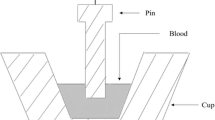Abstract
Fibrinolytic system impairment contributes to the development of thrombotic disease such as cardiovascular disease and stroke. Therefore, an agent that increases fibrinolytic activity may be useful for the prevention of these diseases. In this study, to explore novel profibrinolytic agents, we examined the profibrinolytic effect of Enzamin, an extract of metabolic products from Bacillus subtilis AK and Lactobacillus in vitro and in vivo. Enzamin directly enhanced plasmin activity generated by tissue-type plasminogen activator (t-PA) by twofold but not by urokinase-type plasminogen activator (u-PA) in vitro, which was measured employing both the chromogenic substrate H-d-Val-Leu-Lys-pNA (S-2251) and fibrin plate. Enzamin also increased plasmin activity generated by t-PA in the cell lysate and culture medium of endothelial cells, measured by fibrin zymography. Furthermore, the oral administration of a 1% concentration of Enzamin increased plasmin activity generated by t-PA by 1.7-fold but not by u-PA in the euglobulin fraction of mouse plasma. In conclusion, Enzamin has a unique ability to enhance the fibrinolytic activity through an increase in endogenous plasmin activity generated by t-PA released from endothelial cells, and may be a beneficial supplement for the prevention of thrombotic episodes.






Similar content being viewed by others
References
Collen D, Lijnen HR (1991) Basic and clinical aspects of fibrinolysis and thrombolysis. Blood 78(12):3114–3124
Collen D, Lijnen HR (1995) Molecular basis of fibrinolysis, as relevant for thrombolytic therapy. Thromb Haemost 74(1):167–171
Marin F, Roldan V, Lip GY (2003) Fibrinolytic function and atrial fibrillation. Thromb Res 109(5–6):233–240. doi:S0049384803002597
Saraf S, Christopoulos C, Salha IB, Stott DJ, Gorog DA (2010) Impaired endogenous thrombolysis in acute coronary syndrome patients predicts cardiovascular death and nonfatal myocardial infarction. J Am Coll Cardiol 55(19):2107–2115. doi:S0735-1097(10)00867-3
Peng Y, Yang X, Zhang Y (2005) Microbial fibrinolytic enzymes: an overview of source, production, properties, and thrombolytic activity in vivo. Appl Microbiol Biotechnol 69(2):126–132. doi:10.1007/s00253-005-0159-7
Enzamin Research Institute (2007) Method for producing health nutritive food. Issued by Japan Patent Office, P3902015 (in Japanese)
The features of Enzamin. http://www.enzamin.com/product04a.html (in Japanese). Accessed 7 Oct 2010
Effect of Enzamin treatment in spontaneously hypertensive (SHR) rats. http://www.enzamin.com/enm09.html (in Japanese). Accessed 7 Oct 2010
Effect of Enzamin treatment in experimental diabetic rats. http://www.enzamin.com/enm07.html (in Japanese). Accessed 7 Oct 2010
Okada K, Ueshima S, Takaishi T, Yuasa H, Fukao H, Matsuo O (1996) Effects of fibrin and alpha2-antiplasmin on plasminogen activation by staphylokinase. Am J Hematol 53(3):151–157. doi:10.1002/(SICI)1096-8652(199611)53:3<151:AID-AJH1>3.0.CO;2-Y
Matsuo O, Sakai T, Bando H, Okada K, Nakajima S, Takagi O, Izaki S (1986) Plasminogen activator in bronchoalveolar fluid. Haemostasis 16(1):43–50
Ohkura N, Oishi K, Fukushima N, Kasamatsu M, Atsumi GI, Ishida N, Horie S, Matsuda J (2006) Circadian clock molecules CLOCK and CRYs modulate fibrinolytic activity by regulating the PAI-1 gene expression. J Thromb Haemost 4(11):2478–2485. doi:10.1111/j.1538-7836.2006.02210.x
Urano T, Sakakibara K, Rydzewski A, Urano S, Takada Y, Takada A (1990) Relationships between euglobulin clot lysis time and the plasma levels of tissue plasminogen activator and plasminogen activator inhibitor 1. Thromb Haemost 63(1):82–86
Skurk T, Hauner H (2004) Obesity and impaired fibrinolysis: role of adipose production of plasminogen activator inhibitor-1. Int J Obes Relat Metab Disord 28(11):1357–1364. doi:10.1038/sj.ijo.0802778
Jansson JH, Johansson B, Boman K, Nilsson TK (1991) Hypo-fibrinolysis in patients with hypertension and elevated cholesterol. J Intern Med 229(4):309–316
Poli KA, Tofler GH, Larson MG, Evans JC, Sutherland PA, Lipinska I, Mittleman MA, Muller JE, D’Agostino RB, Wilson PW, Levy D (2000) Association of blood pressure with fibrinolytic potential in the Framingham offspring population. Circulation 101(3):264–269
Lisman T, de Groot PG, Meijers JC, Rosendaal FR (2005) Reduced plasma fibrinolytic potential is a risk factor for venous thrombosis. Blood 105(3):1102–1105. doi:10.1182/blood-2004-08-3253
Okayama T, Nakano M, Odake S, Hagiwara M, Morikawa T, Ueshima S, Okada K, Fukao H, Matsuo O (1994) Synthetic dipeptide, N-stearoyl-d-Ser-l-Pro-OEt, induces release of tissue-type plasminogen activator in cultured cells and in experimental animals. Chem Pharm Bull (Tokyo) 42(9):1854–1858
Wall U, Jern S, Tengborn L, Jern C (1998) Evidence of a local mechanism for desmopressin-induced tissue-type plasminogen activator release in human forearm. Blood 91(2):529–537
Ueshima S, Matsuno H, Hayashi M, Horibuchi K, Okada K, Fukao H, Uematsu T, Matsuo O (2002) Function of tissue-type plasminogen activator releaser on vascular endothelial cells and thrombolysis in vivo. Thromb Haemost 87(6):1069–1074
The National Institute of Neurological Disorders and Stroke rt-PA Stroke Study Group (1995) Tissue plasminogen activator for acute ischemic stroke. N Engl J Med 333(24):1581–1587. doi:10.1056/NEJM199512143332401
Yepes M, Roussel BD, Ali C, Vivien D (2009) Tissue-type plasminogen activator in the ischemic brain: more than a thrombolytic. Trends Neurosci 32(1):48–55. doi:10.1016/j.tins.2008.09.006
Acknowledgments
We thank Mihoko Iwata (Kinki University) for excellent technical assistance.
Conflict of interest
The authors state that they have no conflict of interest.
Author information
Authors and Affiliations
Corresponding author
Rights and permissions
About this article
Cite this article
Tamura, Y., Okada, K., Kawao, N. et al. Profibrinolytic effect of Enzamin, an extract of metabolic products from Bacillus subtilis AK and Lactobacillus . J Thromb Thrombolysis 32, 195–200 (2011). https://doi.org/10.1007/s11239-011-0552-2
Published:
Issue Date:
DOI: https://doi.org/10.1007/s11239-011-0552-2




